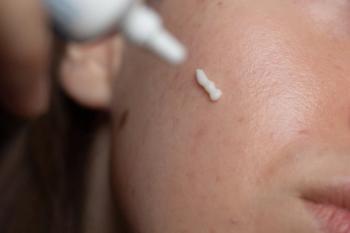
Seven-Year Safety Review Confirms Brodalumab’s Steady Risk Profile in US Postmarketing Surveillance
Key Takeaways
- Brodalumab's safety profile remains stable over seven years, with no new safety signals and low adverse event rates, including suicidality and fungal infections.
- The drug's safety data, from 5,449 patients over 7,845 patient-years, show consistent results, with common adverse events like arthralgia and headache.
A poster from SDPA 2025 showed brodalumab maintains a consistent safety profile with no completed suicides and low infection rates.
At the 2025 Society of Dermatology Physician Associates (SDPA) Summer Dermatology Conference, a poster presented by Lebwohl et al offered a comprehensive update on the long-term safety of brodalumab (Siliq; Bausch Health Companies Inc).1
Now in its seventh year of postmarketing surveillance in the US, brodalumab’s risk profile remains stable, with no new safety signals and low rates of adverse events (AEs), including those of special clinical concern such as suicidality, fungal infections, and major adverse cardiac events (MACEs). The pivotal trials for brodalumab did not exclude individuals with psychiatric comorbidities or suicidality risk factors, and no causal relationship has been established between the drug and suicidality.
The findings serve as a follow-up to the team’s previously published 6-year pharmacovigilance report2 and further support the safety of this IL-17A receptor antagonist, which was FDA approved in 2017 for moderate to severe plaque psoriasis in adults who have experienced treatment failure or lost response to other systemic therapies.3
The pharmacovigilance data analyzed were submitted to Ortho Dermatologics by patients and health care providers from August 15, 2017, through August 14, 2024. The data set captured safety information from 5449 patients treated with brodalumab, accounting for 7845 patient-years of exposure.
During the 7-year surveillance period, 49.9% of patients (2719 of 5449) treated with brodalumab experienced at least 1 reported AE, with approximately a quarter of these cases submitted by health care providers. Arthralgia was the most frequently reported AE, occurring in 140 patients, consistent with the rate observed in year 6.2
Other commonly reported AEs included headache in 58 patients, fatigue in 54, injection site reactions in 43, and myalgia in 40. Diarrhea and nausea were reported in 37 and 32 patients, respectively. No new cases of neutropenia were observed, and only 1 new tinea infection was reported during the most recent year.
With respect to psychiatric safety, no completed suicides were reported over the full 7-year period. Only 1 suicide attempt occurred, which was reported during year 3. Depression was documented in 60 patients, on par with data from the previous year’s analysis.2
Infectious complications were also monitored. A total of 118 serious infections were reported. Only 4 of these events were considered related to brodalumab. Two new Candida infections were documented in year 7, and no new COVID-19–related deaths occurred. Overall, the rate of fungal infections remained low at 0.17 per 100 patients, with no new invasive fungal infections reported since year 6. Inflammatory bowel disease was infrequent, with only 3 cases reported over the entire 7-year period, and no additional cases recorded in year 7.
Malignancy events were reported in 55 patients, totaling 64 cases. These included neoplasms of the right ovary, colorectal cancer, 2 cases of basal cell carcinoma, 1 case of squamous cell carcinoma, and isolated reports of renal and prostate cancers.
Regarding cardiovascular risk, there were no new adjudicated MACEs reported in year 7. Across the entire surveillance period, 13 adjudicated MACEs were reported. Of these 13 patients, 92% had preexisting cardiovascular risk factors. Furthermore, more than half of the patients (54%) continued brodalumab therapy following their cardiac event.
"Pharmacovigilance data throughout 7 years are consistent with the established safety profile of brodalumab observed in long-term clinical trials and previous US pharmacovigilance reports, with no completed suicides and a low fungal infection rate," Lebwohl et al wrote.
As postmarketing surveillance continues, these data may provide growing reassurance for clinicians and patients alike, especially regarding long-term safety and psychiatric outcomes.
References
- Lebwohl M, Koo J, Armstrong A, et al. Brodalumab: Seven-year US pharmacovigilance report. Poster presented at: 2025 SDPA Summer Dermatology Conference; June 25-29, 2025; Washington, DC.
- Lebwohl MG, Koo JY, Armstrong AW, et al. Brodalumab: six-year US pharmacovigilance report. Dermatol Ther (Heidelb). 2025;15(1):213-222.
doi:10.1007/s13555-024-01304-y - Siliq (brodalumab) approved by the US FDA for adult patients with moderate-to-severe plaque psoriasis. News release. AstraZeneca. February 16, 2017. Accessed June 28, 2025.
https://www.astrazeneca.com/media-centre/press-releases/2017/Siliq-brodalumab-approved-by-the-US-FDA-for-adult-patients-with-moderate-to-severe-plaque-psoriasis-160220170.html#
Make sure to keep up to date with the latest coverage from the conference and subscribe to Dermatology Times to receive daily email updates .
Newsletter
Like what you’re reading? Subscribe to Dermatology Times for weekly updates on therapies, innovations, and real-world practice tips.


















